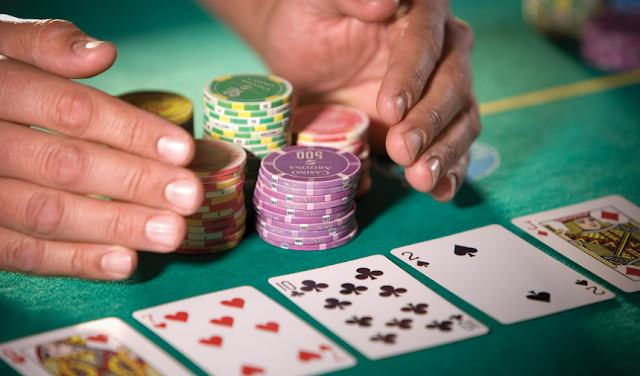Card Counting in Blackjack

Card Counting in Blackjack
Card counting in blackjack is a way to increase your winnings by monitoring cards which were dealt. It is a highly effective strategy, but it requires patience and practice.
The essential idea is to assign a value to each card. For example, cards with a value of two to six have a +1 count, while a card with a value of seven to nine includes a -1 count.
Hi-Lo System
The Hi-Lo system is one of many simplest and most popular card counting approaches for blackjack players. It is a simplified version of Edward Thorp?s Ten Count and was invented by Harvey Dubner.
It uses a point value assigned to each card in the deck. The cards from two through six get yourself a positive value, seven, eight and nine get zero and all of those other cards are minus one.
This technique can be used to increase your chances of winning by predicting when the dealer will bust. However, it is very important remember that there are specific things you need to take into account before using this strategy.
The Hi-Lo card counting strategy is effective and an easy task to learn, making it a fantastic choice for both new and experienced players. It is also a great way to start if you are searching for an easy to comprehend strategy to improve your blackjack skills. Despite 안전 바카라사이트 , it is still smart to practice this plan thoroughly so that you can be confident that it will work when you play.
Hi-Low System
The Hi-Low system is just about the most popular and efficient card counting systems. It is a great strategy for beginner blackjack players or anyone seeking to enhance their blackjack game.
The most crucial feature of the Hi-Low system is its simplicity and the truth that it could be easily learned. It is an excellent way to make the the majority of your gaming time at the casino and increase your likelihood of winning.
This system divides cards into high and low ranks and assigns a value to each rank, ranging from +1 to -1 and even 0 for certain cards. For 먹튀검증 온라인카지노 , the number 5 cards have a value of +1, while the Aces have a value of -1.
The Hi-Low system is a level one count, which means that the active sum won't exceed or below one value. 카지노사이트 makes it a comparatively easy system to learn, although it is still a complex one and requires more concentration than other methods.
Knock-Out System
The Knock-Out system, also referred to as K-O, is a very simple and effective card counting strategy that can be used by beginner Blackjack players. It is similar to the Hi-Lo card counting strategy and is a popular choice for those who need to get started with a simple and accurate system.
The purpose of a card counting strategy would be to assign point values that roughly correlate to the actual effect of removal (EOR) of cards. These point values are then put into a reference count, such as zero, until they reach the required level that would give the player an improved edge.
The KO system is unbalanced and uses a running count rather than true count. This allows the player to quickly determine if the shoe is abundant with high cards or low cards. Additionally it is easy to apply in real-life games without the need to apply it for days or weeks. Once the player includes a good grasp of the count, they can alter basic strategy moves to create them more profitable.
Strategy
Card counting is really a blackjack strategy that is used to determine whether the next hand will give a new player or dealer advantage. It is predicated on statistical evidence that high cards (such as for example aces and 10s) benefit the player, while low cards (such as 4s and 5s) benefit the dealer.
Card counters are usually able to decrease the house edge by way of a factor of 1-2%, depending on their skill and rules. They're known to have a larger advantage in blackjack games that have several deck and lower payouts.
There are many different forms of card counting systems available, plus they all vary in effectiveness. However, 안전 온라인카지노사이트 have a basic principle. They assign a positive, negative or zero value to each card dealt. Typically, the lowest valued card is assigned a +1 value, while the highest valued card is given a -1 value.


